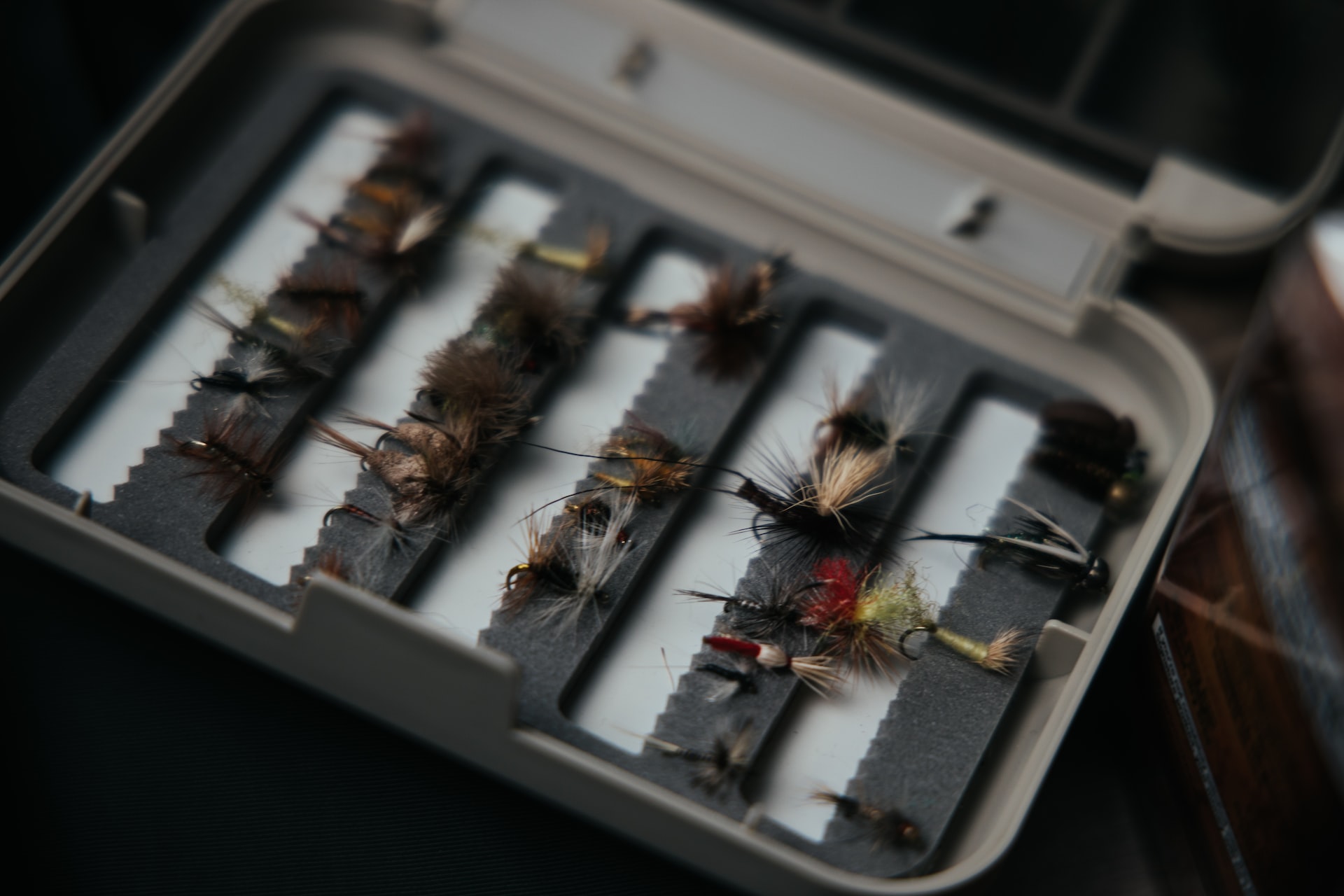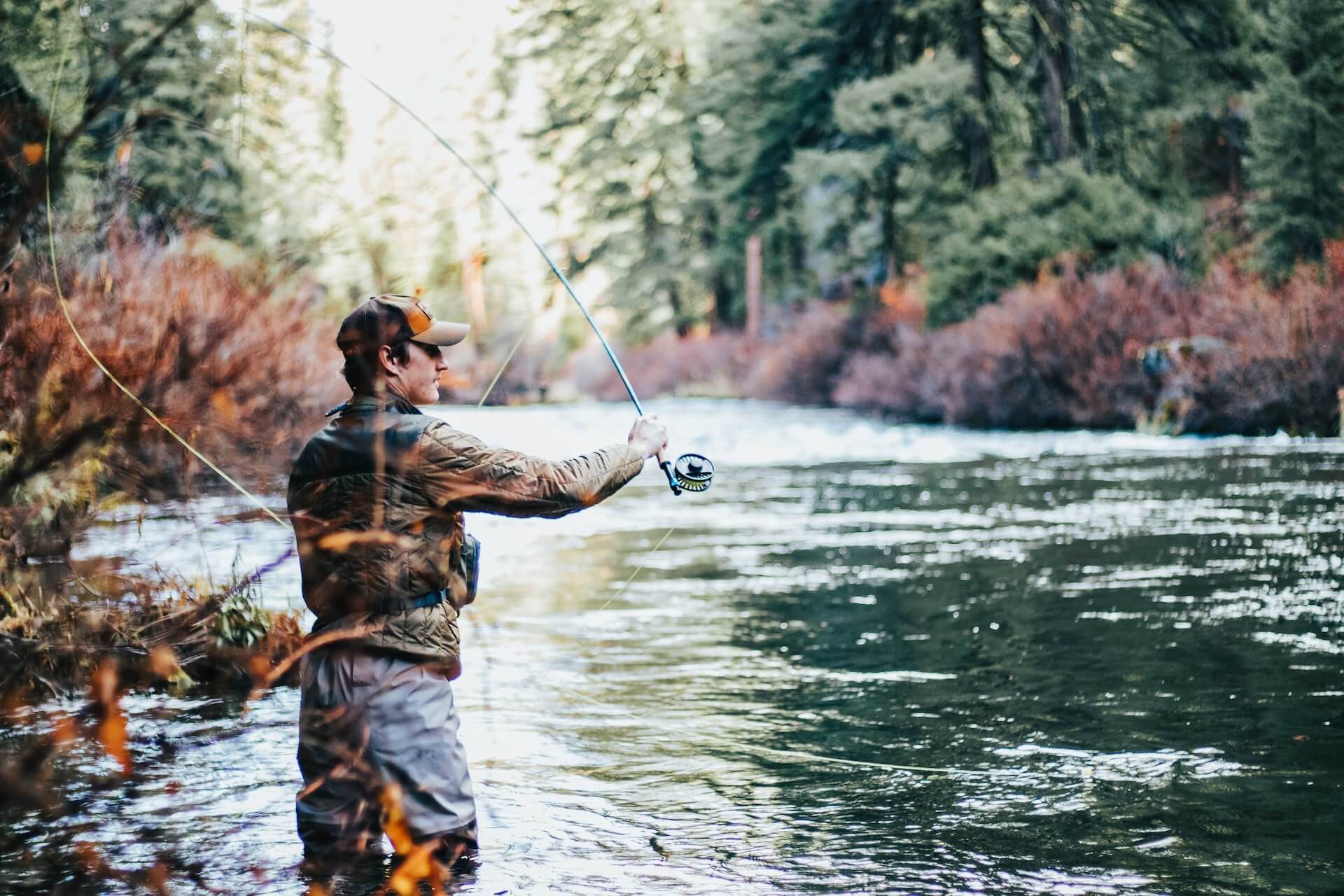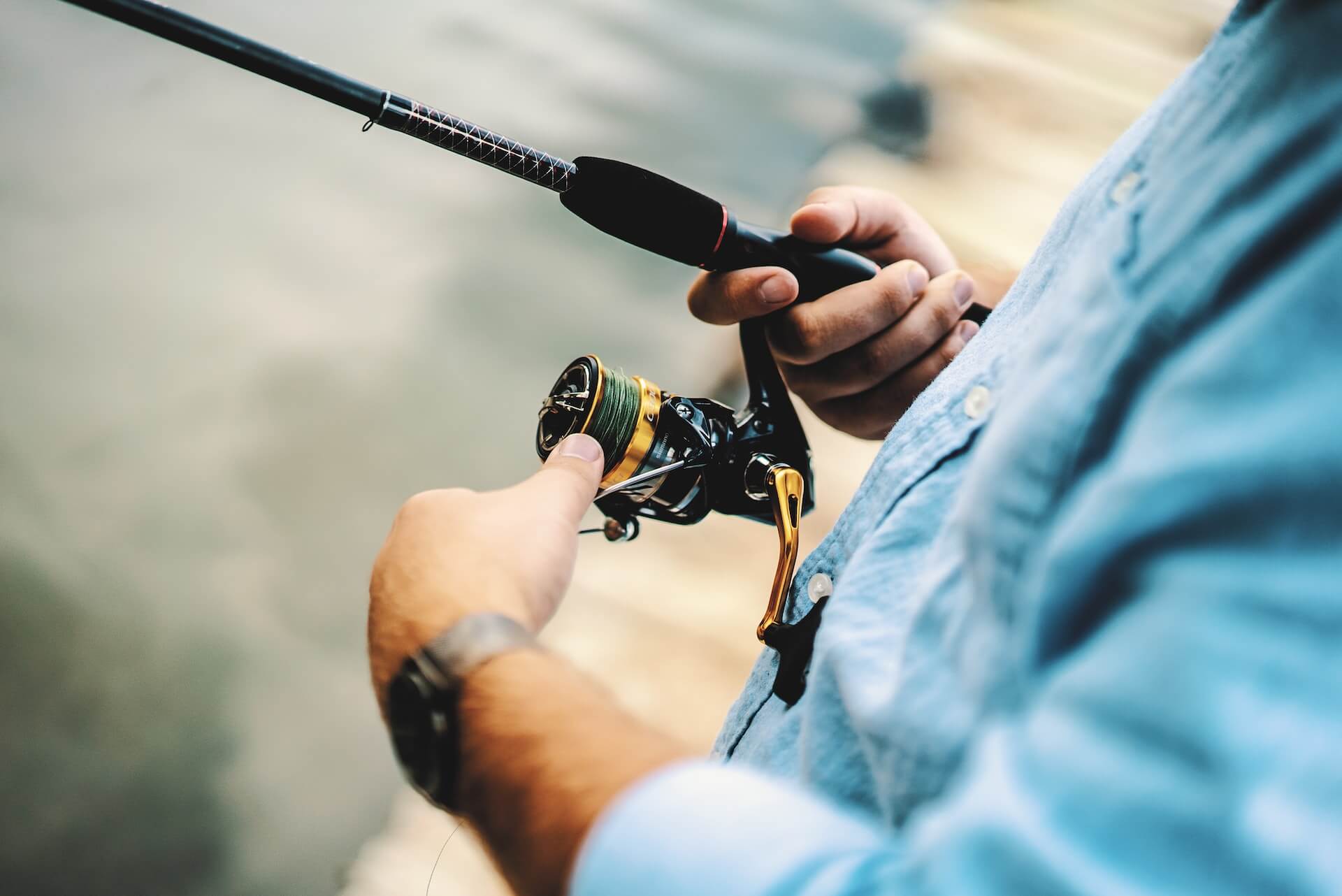You can go many different ways about landing a catch – fly fishing, bait casting, spinning, surfcasting, and many more. If you’re just starting to figure out the first one, chances are you’re wondering – what is a tippet in fly fishing? Here’s a crash course on all of the basics of tippets and fly fishing to help you angle successfully, even on your first try.
The tippet is an essential part of fly fishing equipment. It connects the artificial fly lure to the rest of the setup and is directly attached to the fly leader line. Made from nylon and very thin, the tippet narrows down the line to the small, lightweight bait and is completely invisible to the fish. For the whole setup to work well, you have to match the different parts and their sizes properly, and there are many systems and charts available to help you with that.
Fly Fishing Is All About Creating an Appearance of a Fly – It’s the Only True Form of Angling for Many Experienced Fishermen
There are many types of fishing as well as different styles of approaching the whole ordeal, and for anyone that is a beginner in this field, it can get really confusing pretty quickly. You could write a whole book about fly fishing alone, so it’s important to keep to the basics if you’re just starting out.
Fly fishing is definitely an exciting way of angling, and soon after you try it out, you’ll realize why so many seasoned veterans consider it a form of art and maybe even the only true way to land a catch.
A Lightweight Lure in the Form of an Artificial Fly Is Used to Catch Fish
When you take the phrase “fly fishing” in the most literal sense, you get the definition of this way of fishing. It’s all about creating an appearance of a fly in nature, and that’s possible with the use of an artificial, lightweight lure. Made of fur, feathers, or other natural materials, handling this type of lure entails a special type of casting full of fluid and smooth motions.
The Art of Fly Fishing Entails Casting Full of Fluid Motions and the Use of Special Gear
Besides perfecting the style of casting to appear as natural as possible, fly fishing also requires special gear. While you can tie a fishing hook in a way that’s already familiar to you, there are many other pieces of equipment you’ll need to learn to work with. So, before I get to the ins and outs of tippets, let’s see what other specialized fishing gear you’ll have to get acquainted with.

The Integral Parts of a Fly Fishing Line and Their Importance
To best understand what exactly a tippet is, as well as its importance in the whole fly fishing setup, it’s important to familiarize yourself with other parts of the fishing line. Besides using a special fly fishing rod, you’ll also need a couple of pieces of equipment designed particularly for this kind of angling.
Other than the tippet, here are the most important parts of fly fishing equipment:
Backing Is an Optional Part You Should Use for Bigger Catches
The part that connects the fly fishing line to the rod and the fishing reel is called the backing. Most commonly made from a type of polyester called dacron, the backing usually has a breaking strength of 10 lb to 30 lb and a length of about 70 to 90 yards.
Unlike the other pieces of equipment I’ll discuss, the backing is optional, and its use depends on the desired size of the fish. For small types, such as pan fish or brook trout, it’s not needed. On the other hand, if you’re hoping for a bigger catch, consider backing the essential part of your fly fishing equipment.
Fly Line Connects the Leader Line to the Rod
To successfully create the appearance of a fly or some other insect, you need to have a smooth transition from the strong lines of the fishing rod all the way to your small, lightweight lure. That’s where the fly fishing line comes into the picture – it’s both strong enough to handle larger catches and flexible enough to create the needed fluid motions.
Fly lines come in a wide variety of colors, from ordinary dark shades all the way to striking fluorescent colors such as hot pink. That’s possible because of the line setup, where the fly line is nowhere near the fish, and they can’t even see it. After all, there are other things about the whole ordeal that excite them more – like snacking on some insects, above all.
Leader Line Is Situated at the End of the Fly Line
The ending part of the fly line is called the leader line, and it’s connected to the fly lure via the tippet. The leader lines used for fly fishing are different from regular ones, and they have about 8 to 12 ft of range. Because the fly line is thicker at the end, the leader line is there to ease the way to the more narrow tippet and prevent the heavier fly line from hitting the water and scaring the catch.
What Is a Tippet in Fly Fishing, and How Does It Work With the Rest of the Setup?
Now that you know what the backing, the fly line, and the leader line are, you’ll more easily understand the purpose of the tippet. Connecting the fly lure with the rest of the setup, the tippet is a thin nylon line that is almost invisible, which makes it the perfect place to attach your bought or DIY-made fish hook that will imitate a fly.
Tippets Are Made From Fluorocarbon or Mono-Filament – Both Are Virtually Invisible to the Fish in the Water
As already mentioned, tippets are made from a single nylon line, which gives them optimal flexibility and transparency. When it comes to materials used for both leader lines and tippets, you have two options – fluorocarbon and mono-filament.
Mono-filament tippets have been around for a while, and they are the more cost-efficient options. While it floats better, it’s not that practical for deep waters as it can loosen and absorb the water. So, while it’s popular for its low price, it depreciates more quickly than fluorocarbon tippets. This type is relatively new in the field, and it’s more transparent as well as durable. It’s especially great for nymph fly fishing.

Tippet Is Responsible for the Fluid Movements of the Fly Thanks to Its Size and Material
While some people claim that regular lines can be used for fly fishing, most seasoned veterans strongly disagree. Between the materials available, mono-filament tippets are better for beginners because it’s much easier to tie knots.
They usually match the length of the leader line, or they’re a bit smaller, most commonly somewhere between 2 and 4 ft. Also, the diameter of the tippet is smaller or exactly the same as the leader line you attach it to. Thanks to its size and flexibility, the artificial fly appears to move naturally and freely, and this is obviously very important when it comes to fly presentation.

The Differences Between the Leader Line and the Tippet Are What Makes Them a Perfect Match
Due to their material and elasticity, the leader line and the tippet might seem like they’re the same thing. However, there are significant differences between the two, and these differences are the exact reason why they work so well in landing a catch.
Most experienced fly fishers will use the same leader and switch the tippets according to the circumstances. The leader line is thicker and longer, and its diameter is not uniform. Compared to that, the tippet is less heavy, with the same diameter along its length, and thanks to its transparency, it’s the perfect end to attach the artificial insect to.
You Can Successfully Create the Impression of a Fly With the Right Setup
The leader line and the tippet are different for a reason – together, they create a virtually invisible attachment to the lure. Thanks to this transparency, the fly appears natural and doesn’t scare the fish, and you can also use a colorful fly line to see it better while casting.
On the subject of casting, the leader and the tippet are crucial for this as well because the energy transfer from the fishing line to the artificial fly lure is quite important. Of course, this can be done only with a good setup, so let’s see how you can match the different parts of your equipment.

It’s Important to Match the Different Gear Well So That You Can Have the Most Efficient Fly Fishing Experience
You can have the most expensive piece of equipment out there, but if they’re not matched well, the whole thing is of no use. That’s why one of the most important things to learn when you’re starting out is how to match your gear. This includes the fishing rod, reel, backing, fly line, leader, and tippet.
The Gear Manufacturer Usually Includes a Chart With Recommendations
All of that mixing and matching can get really confusing. Luckily, most manufacturers include a chart with recommendations for their products. Thanks to that, when you purchase one part of the equipment, you’ll learn the ideal types and sizes of other pieces you need. As mentioned, most fishers will reuse the same leader and switch the tippets depending on the situation, so they usually have a few different pieces ready on hand.
The X System – The Most Common Tippet Sizes and Their Specifications
The first thing you’ll notice while looking through different options of tippets is that their size is described using an X. The higher the number, the smaller this piece of fly fishing equipment. While medium sizes such as 4X work well for most circumstances, it’s important to know which size is used for what and also how to build the most efficient setup.
Here are the most common sizes of tippets and some of their specifications, starting from the largest:
| Tippet Size | Breaking Strength | Diameter | Fly Size | Fish Size |
|---|---|---|---|---|
| 0X | 15.5 lbs | .011” | 1 | Steelhead, Salmon |
| 1X | 14.5 lbs | .010” | 2-6 | Permit, Bonefish, Redfish |
| 2X | 11.5 lbs | .009” | 4-8 | Smallmouth and large bass |
| 3X | 8.5 lbs | .008” | 6-8 | Bass, Large trout |
| 4X | 6 lbs | .007” | 12-16 | Trout |
| 5X | 4.75 lbs | .006” | 14-18 | Trout, Panfish |
| 6X | 3.5 lbs | .005” | 16-22 | Trout |
| 7X | 2.5 lbs | .004” | 18-24 | Trout, Panfish |
| 8X | 1.75 lbs | .003” | 22-28 | Trout, Panfish |
There Are Plenty of Mono-Filament Options Available on the Market – Perfect for Getting Into Fly Fishing as a Beginner
As mentioned, mono-filament tippets are best for beginners because they are easier to handle. While they’re not as durable as fluorocarbon ones, there are plenty of them available on the market. The most reputable brands are not cheap but are definitely worth the price. Here are some brands that offer quality tippets:
- Rio Fly Fishing,
- Scientific Anglers,
- Trouthunter,
- Umpqua,
- KastKing Paramount Tippet.
Fly Fishing Is Not Exactly a Piece of Cake, but It Can Be Extremely Rewarding
For any beginner, figuring out all of the ins and outs of this outdoor activity can be very confusing and hard, especially when it comes to fly fishing. But with a little bit of practice and patience, you will end up with a really fun and rewarding activity up your sleeve. I wish you good luck in your path of o-fish-ally becoming a pro at fly fishing!







